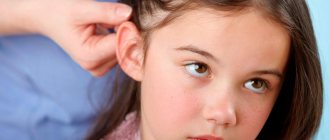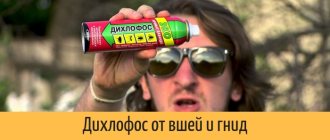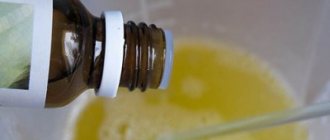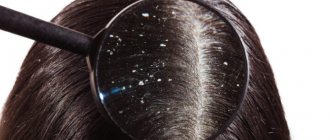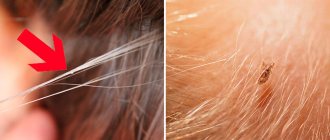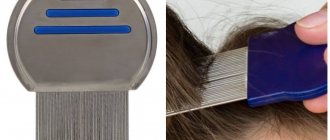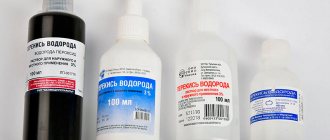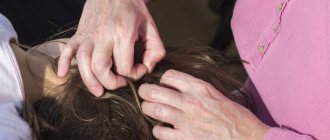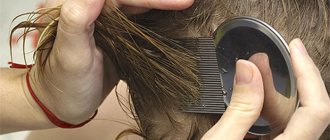In 15 years, LiceGuard LLC has sold more than 10 million products for the destruction of lice and nits.
The company specializes in the production of safe and effective products for the treatment of head lice. The most famous of these is the Robi Comb, which kills lice and nits on contact.
LiceGuard products are sold in the United States and Canada, as well as in more than 20 countries through a network of distributors. The head office is located near Boston, Massachusetts, USA.
What are lice?
Head lice (Pediculus humanus capitis) are small, grayish-white parasitic insects measuring 2–4 mm in size. Lice live on the scalp and otherwise die within 48 hours. Head lice cannot appear on other parts of the body or on the fur of animals. They do not go deep into the scalp and move between the hair. Adults feed on blood 2–3 times a day, sucking it through the scalp, which leaves small reddish papules. At one time, the female absorbs up to 0.7 mg of blood, the male - about 3 times less. While feeding, lice secrete saliva, which causes severe, unpleasant itching. Small wounds and scratches appear on the scalp, which can become infected. After ingesting fresh blood, the lice's body color changes to red or purple. A louse can live no more than 2 days without blood.
What types of lice are there?
When thinking about treatment options, it is important to have an idea of what types of parasites there are. They differ from each other in their habitat. Depending on this, there are three types:
- Head ones. The most common type. Individuals parasitize on the scalp: beard, hair and mustache.
- Pubic. They inhabit the pubic and anal areas, as well as the armpits of humans.
- Clothes. Insects are not constantly on the human body, only at the time of the bite. The rest of the time they hide in underwear, bedding, and clothes.
Where do lice live and how do they become infected?
The main route of transmission of lice is through direct head-to-head contact. Maximum concentrations of parasites are observed in warmer areas of the head: in the back of the head and behind the ears. These areas contain the largest number of nits - lice eggs.
Lice do not have wings and, despite popular misconceptions, they cannot fly or jump. Lice are spread by contact with contaminated hair, other people's hats, combs, towels, pillows, or clothing that is pulled over the head. Lice are equally common in poor and rich regions of the world.
Infection with lice occurs in kindergartens, schools, public places, in transport or on playgrounds, etc. Schools are not the only source of lice, since children actively contact each other outside of school hours. It is impossible to get lice from pets or in the pool.
How to protect your child from lice at school?
No matter how tidy your child is, he is at risk of getting lice. Especially if you are in junior or middle school. The fact is that in the summer many schoolchildren relax in children's camps and dachas, from where they often return with such a nuisance as lice. And if parents do not notice this in time and do nothing, children carry a blood-sucking army of parasites on their heads to school and infect their classmates with them. The appearance of lice often causes panic among parents. But let's put aside the panic! Let's learn to take action in advance!
What you need to know about head lice?
Head lice infestation (doctors call it “head lice”) has nothing to do with personal hygiene. Even the most inveterate cleaner can develop blood-sucking parasites that cause a lot of trouble.
99% of infections occur through direct contact “head to head”, so the main risk group are children who, at their age, are very close contacts, especially during joint games.
Once on the head, lice begin large-scale work: they not only bite, but also actively reproduce. Lice eggs (nits) are attached to the hair with a special sticky secretion and wait to mature. In a word, even if you catch a spotted louse and deal with it, this does not mean that after a few days its offspring will not continue the “lousy” business.
Prevention of pediculosis: how to prevent infection?
In order to avoid infection with head lice, it is important to follow simple rules of prevention:
- during outbreaks of head lice (period of increased danger - summer and the first 2-3 weeks after the holidays), regularly examine the child’s head;
- If your child is infested with head lice, notify the class teacher and the parents of the children with whom your child most often interacts. The main thing is to examine all children as quickly as possible and get rid of lice if they are found. Thus, the chain of transmission of lice from child to child in a children's group is broken.;
- Make sure that your child always has a neat hairstyle: boys are recommended to wear short haircuts, girls should wear long hair in braids;
- Use products to prevent head lice at home.
How to choose a product for the prevention of pediculosis?
Today, the choice of means to prevent head lice infection is, alas, small. Among the repellents is one developed using special technology, providing protection for up to 24 hours.
The repellent contains a special ingredient IR3535, which repels adult parasites and prevents them from laying new eggs. The drug is recommended for use during “dangerous” periods - in the summer and in the first weeks of school after the holidays. Paranit Repellent is suitable for daily use by adults and children over 3 years old.
Who needs to use Paranit Repellent “Protection against Lice”?
A remedy for the prevention of head lice will help:
- For elementary and middle school students at the beginning of the school year: the repellent will help prevent them from catching lice from classmates returning from vacation;
- For children treated for head lice: using repellent will help avoid re-infection in the school environment;
- For parents of a child who has lice: the repellent will prevent the spread of lice within the family while the child is undergoing treatment.
How to apply repellent correctly?
For Paranit Repellent “Protection against Lice” to work effectively, follow the instructions for use:
- apply the repellent to clean, dry hair, after combing it or styling it;
- spray the product onto the entire surface of the hair from a distance of about 20 cm, paying special attention to the back of the head and the area behind the ears;
- depending on the thickness and length of the hair, apply 20-25 sprays;
- After application, do not use a hairdryer - let your hair dry naturally. The product dries on the hair quite quickly;
- Treat your hair with Paranit repellent daily and after each hair wash during outbreaks of head lice, as well as after treatment with lice products to avoid re-infection.
Protect yourself and your loved ones from lice!
Find out more at https://vsham.net/
Certificates of state registration:
PARANIT Repellent “Protection against lice” - SoGR No. RU.77.99.88.002.E.006585.08.14 dated 08.08.2014
As an advertisement
Before use, read the instructions or get advice from a specialist by calling 8-800-250-17-35.
published 30/08/2016 08:58 updated 30/08/2016
Reproductive cycle
Lice reproduce by laying nits. Nits are small, usually white, shiny oblong eggs, about 1 mm long, attached to the hair with a special adhesive substance.
An adult female louse produces about 140 nits during her life (about 4 per day), which she deposits at the roots of the hair (mainly behind the ears and in the neck area).
After 8-9 days, a nymph emerges from the nit - a louse larva. On days 17–18, the nymph turns into an adult, which is able to mate and lay new eggs. Female lice live about 33–35 days, males a few days less.
In unfavorable conditions, nits can “dormant” for about a month before hatching.
How to detect and recognize lice?
A careful examination of the scalp may reveal nits or even notice adult motile individuals. Lice are light brown or gray in color. Adult females are 3–4 mm long, males 2–3 mm long. Three pairs of lice legs with “hooks” at the ends allow them to hold tightly to the hair. The mouthparts of lice are of the sucking type.
Nits can be confused with dandruff, however, dandruff is easy to shake off, and lice eggs are firmly glued to the hair. In bright light and with the help of a magnifying glass, detecting nits is not difficult.
You can use a LiceGuard RobiComb Pro comb or comb to .
What to do if a child has lice?
If you find lice or nits on your child, he should be excluded from attending classes until the head lice is cured. The school or kindergarten must be notified immediately, as other children may also be infected. You should also check other family members for lice.
for treating head lice , but a remedy for lice and nits for children should be as gentle and safe as possible.
Getting rid of lice is often a long and labor-intensive process. There is no panacea for instant cure. In addition to the medical one, there is also a psychological aspect. Talk to your child and explain to him that lice are a common problem that you shouldn't be ashamed of, but lice and nits are a nuisance and you should try to get rid of them as quickly as possible.
Where can you get infected?
Speaking about methods of infection, you should focus on the structure of their body. Translucent individuals have limbs only in the front part of the body. Movement occurs due to 3 pairs of legs in the front of the body and muscle contraction. This indicates a complete inability to perform any kind of jumping or flying. By the way, the body is equipped with reduced wings, but they are non-functional. This information suggests that you can only become infected through direct contact of an infected person with a healthy person.
The risk is greatest when there is contact with areas where insects live: hair and clothing. Let's consider situations where the risk of transmission of an individual is highest:
- Visiting shopping centers. Sale mode or just a day off means a crowd of shoppers for a shopping center. In some places the contact between people is more than close. Crowding in departments serves as an excellent breeding ground for the transmission of the parasite. In addition, trying on new clothes is also dangerous. Insects are able to pass from person to person through clothing.
- Using public transport. Rush hours create unbearable crowds in subway lobbies and crowds on buses and other forms of public transport. Here and there we touch other people's hair and clothes. If there is a person nearby who has head lice, there is a high chance of getting a copy of the insect.
- Visiting swimming pools and baths. Only thorough preventive treatments will minimize the risk of the spread of bloodsuckers in such institutions. The slightest irresponsibility in this matter can lead to many visitors becoming infected. Individuals survive well in an aquatic environment. Therefore, swimming in the same water as a sick person will lead to infection. Locker rooms are also perfectly conducive to this result. Contact between clothes of different people creates additional danger.
- Visiting children's institutions. Children are a risk group. This category of people is characterized by the maximum number of daily contacts. In kindergartens, clubs and schools, children constantly touch each other during games, fights, fussing, etc. It is for this reason that pediculosis is considered a childhood disease, however, this is not so.
How to get rid of lice?
The most important thing in removing lice is to interrupt their reproductive cycle.
The most radical medicines contain toxic substances, so they should not be used frequently or in large quantities, and you should also be careful not to get them on the mucous membranes of the child’s mouth, eyes and nose. Before using such medications, carefully read the instructions and consult your doctor.
Mechanical removal of lice is the safest way to treat head lice in children. The Robi Comb and Robi Comb Pro combs kill lice during the combing process using a mild electrical shock. These combs can be used every day until complete healing or for prevention.
The clothes and bedding of someone who has lice or nits must be treated. When the temperature rises to 35°C, the development of lice slows down; at temperatures above 44°C, they quickly die. For example, at a temperature of 50°C, lice die within half an hour, and nits within an hour. Lice also die within 30 minutes at a frost of 50°C, and nits within 4 hours. You can vacuum those things that cannot be washed or cold processed: a louse can live no more than 50 hours without feeding.
If treatment does not produce results for a long time, it is necessary to cut the child’s hair shorter, since it is easier to remove lice and nits from short hair. The same applies to long blond hair, on which nits are practically invisible.
Using Vinegar
Vinegar can be found in every kitchen. The availability and low price of vinegar encourages many to try it as a remedy for lice.
Before application, it is necessary to dilute the vinegar with water in proportions 1:2. The composition applied to the head should be left for 10-15 minutes. After time, comb each strand with a fine comb, removing and crushing individuals and larvae.
Vinegar can leave burns and also cause allergic reactions. The condition of the hair follicles may worsen after such procedures. It is not recommended to use vinegar to treat head lice in children and people with sensitive hair and skin.
How to get rid of nits?
Regardless of the treatment method you choose, you must take care to destroy nits , since even one single egg can give rise to a new generation of parasites. In addition, it is most convenient to get rid of lice and nits at the same time.
Nits are best removed using fine-tooth combs. reusable combs can be used on any hair type and are boil-resistant.


